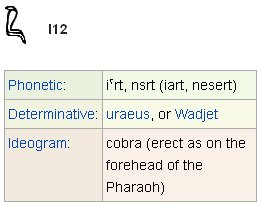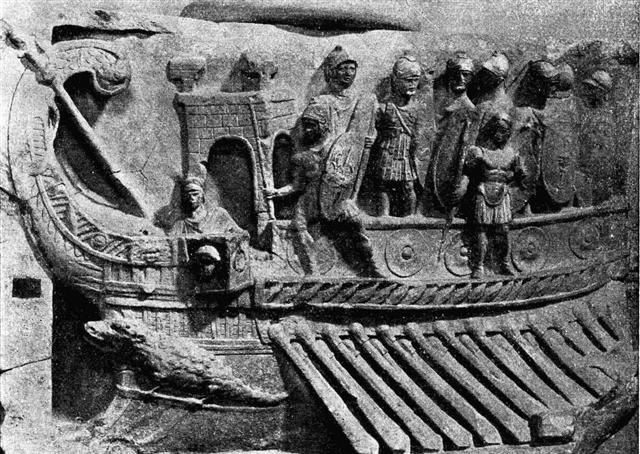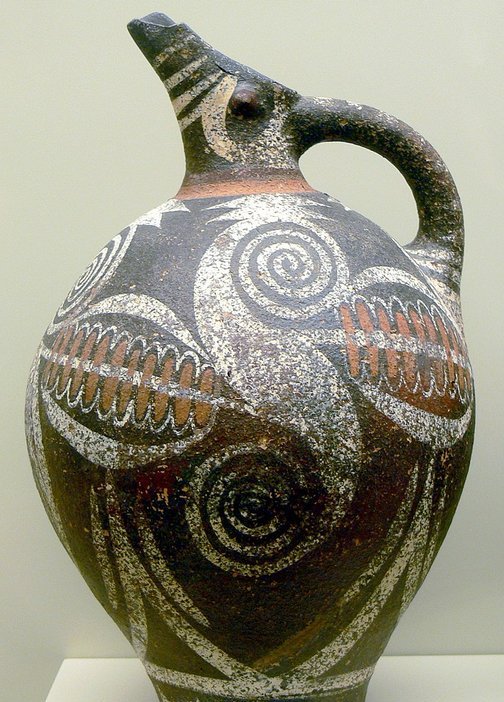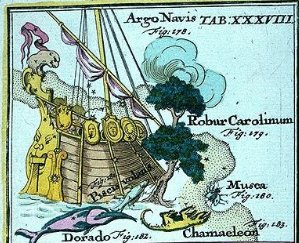RIGEL
We surely have to coordinate Rigel with Castor:
... That there is a
whirlpool in the sky is well known, it is most probably the
essential one, and it is precisely located. It is a group of
stars so named (zalos) at the foot of Orion, close to
Rigel (beta Orionis, Rigel being the Arabic word for 'foot'),
the degree of which was called 'death', according to Hermes
Trismegistos, whereas the Maori claim outright that Rigel marked
the way to Hades (Castor indicating the primordial homeland)
...

 |
|
 |
 |
 |
 |
 |
| Ca9-15 |
Ca9-16
(244) |
Ca9-17 |
Ca9-18 (246) |
Ca9-19 |
Ca9-20 (248) |
|
Nov 19 |
20 (324) |
21 (80 + 245) |
22 |
23 |
24 (328) |
|
16h (*243.5) |
LESATH
|
*245 |
→ 63 + 183 |
σ SCORPII
(*247.0) |
*248 |
|
4h (*60.9) |
*61 |
VINDEMIATRIX |
HYADUM I |
HYADUM II
|
AIN |
|
May 20 |
21 (141) |
22 |
23 |
24 |
25 (145) |
|
"April 9 |
10 (100) |
11 |
12 |
13 |
14 (104) |
|
LIBERALIA |
18 (100 - 23) |
19 (78) |
MARCH 20 |
21 (80) |
22 (145 -
64) |
| i te mauga pu
hia |
E rima ki te henua |
koia ku honui |
erua
maitaki |
ko koe ra |
|
When Metoro said 'hia' it was probably an
instruction for Bishop Jaussen on Tahiti to 'Count!' For instance:
...
Ecclesiastically, the equinox is reckoned to be on 21 March (even
though the equinox occurs, astronomically speaking, on 20 March in
most years) ... → 3-20 ↔ right
ascension day *320 at the south pole star Dramasa.
... A very detailed
myth comes from the island of Nauru. In the beginning
there was nothing but the sea, and above soared the Old-Spider.
One day the Old-Spider found a giant clam, took it up, and tried
to find if this object had any opening, but could find none. She
tapped on it, and as it sounded hollow, she decided it was
empty. By repeating a charm, she opened the two shells and
slipped inside. She could see nothing, because the sun and the
moon did not then exist; and then, she could not stand up
because there was not enough room in the shellfish. Constantly
hunting about she at last found a snail. To endow it with power
she placed it under her arm, lay down and slept for three days.
Then she let it free, and still hunting about she found another
snail bigger than the first one, and treated it in the same way
...

... Then she said to the first snail:
'Can you open this room a little, so that we can sit down?'
The snail said it could, and opened the shell a
little. Old-Spider then took the snail, placed it in the
west of the shell, and made it into the moon. Then there was
a little light, which allowed Old-Spider to see a big worm.
At her request he opened the shell a little wider, and from
the body of the worm flowed a salted sweat which collected
in the lower half-shell and became the sea. Then he raised
the upper half-shell very high, and it became the sky.

Rigi, the worm, exhausted by this great effort, then
died.

Ure. 1. Generation;
ure matá, warlike, bellicose generation (matá,
obsidian, used in making weapons). 2. Offspring; brother;
colleague i toou ure ka tata-mai, your colleague has
turned up. 3. Friendship, friendly relationship; ku-ké-á te
ure, they have become enemies (lit.: friendship has
changed). 4. Penis (this definition is found in Englert's 1938
dictionary, but not in La Tierra de Hotu Matu'a). Ure
tahiri, to gush, to spurt, to flow; e-ure tahiri-á te
toto, blood is flowing in gushes. Ure tiatia moana,
whirlwind which descend quickly and violently onto the ocean;
whirlpool, eddy. Vanaga. Penis; kiri ure, prepuce,
foreskin. P Pau., Mgv., Ta.: ure, penis. Ureure,
spiral. Ta.: aureure, id. Urei, to show the teeth.
Mgv.: urei, to uncover the eye by rolling back the lids.
Churchill. Pau.: Ureuretiamoana, waterspout. Ta.:
ureuretumoana, id. Churchill. H. Ule 1. Penis. For
imaginative compounds see 'a'awa 1, 'aweule,
ulehala, ulehole, ulepa'a, ulepuaa,
ule'ulu. Kū ka ule, he'e ka laho, the penis is
upright, the scrotum runs away (refers to breadfruit: when the
blossom (pōule) appears erect, there will soon be fruit).
2. Tenon for a mortise; pointed end of a post which enters the
crotch of a rafter (also called ma'i kāne). Ho'o ule,
to form a tenon or post for the crotch of a rafter. 3. To hang.
Wehewehe. |
|
*11 |
 |
 |
 |
 |
*100 |
 |
|
Ca10-4 |
Ca10-5 (260) |
Ca10-6 (9 * 29) |
Ca10-7 (262) |
Ca13-20 |
|
Dec 5 |
Dec 6 |
Dec 7 (341,
*261) |
Dec 8 |
March 18 (*362) |
|
*259 |
RAS ALGETHI |
Sarin
(*261.0), ο Ophiuchi (*261.4)
ALRISHA
|
θ Ophiuchi,
ν Serpentis, ζ, ι Apodis (*262.4) |
DZANEB
(*362.4)
ACUBENS
|
|
5h (*76.1)
CURSA
(*76.4)
ψ (65)
ERIDANI |
*77 |
CAPELLA
(*78.4)
THUBAN
|
*262 + *183
= *445
ARCTURUS
|
no star
listed (*180) |
|
June 5 |
June
6 (157) |
June 7
(158, *78) |
June 8 |
Sept 17
(260, *180) |
|
"April 25 (115) |
26 (*36) |
(158 - 41
= 117, *37) |
"April 28
(→ 4 * 29½) |
(*180 - *41
= *139) |
|
APRIL 2
(*12) |
3 (93) |
(158 - 64
= 94, *14) |
APRIL 5
(95, *79 - *64) |
(*139 - *23
= *116) |
|
te kiore - te
inoino |
kua oho te rima kua
kai - ihe nuku hoi |
Tupu te toromiro |
kua noho te vai |
- |
|
Kiore.
Rat. Vanaga. Rat, mouse; kiore
hiva, rabbit. P Pau., Mgv.: kiore, rat,
mouse. Mq.: kioē, íoé, id. Ta.: iore,
id. Churchill.
... In China, with Capricornus,
Pisces, and a part of Sagittarius, it [Aquarius]
constituted the early Serpent, or Turtle, Tien Yuen;
and later was known as Hiuen Ying, the Dark
Warrior and Hero, or Darkly Flourishing One, the
Hiuen Wu, or Hiuen Heaou, of the Han dynasty,
which Dupuis gave as Hiven Mao. It was a symbol
of the emperor Tchoun Hin, in whose reign was a
great deluge; but after the Jesuits came in it became
Paou Ping, the Precious Vase. It contained three of
the sieu, and headed the list of zodiac signs as
the
Rat, which in the far East was the ideograph for
'water', and still so remains in the almanacs of Central
Asia, Cochin China, and Japan ...

... The decoded meaning of the
names 'the dark rat' (i.e.,
the island king
as the recipient of gifts) and 'the gathering
place of the island population' (for the purpose of
presenting the island king with gifts) links them
with the month 'Maro', which is June ... |
|
1 |
Horn |
Α Virginis (Spica) |
Crocodile |
(202.7) |
Oct 9 (282) |
 |
|
2 |
Neck |
κ Virginis |
Dragon |
(214.8) |
Oct 21 (294) |
|
3 |
Root |
α Librae (Zuben
Elgenubi) |
Badger |
(224.2) |
Oct 31 (304) |
 |
| 4 |
Room |
π Scorpii (Vrischika) |
Hare |
(241.3) |
Nov 17 (321) |
 |
|
5 |
Heart |
σ Scorpii |
Fox |
(247.0) |
Nov 23 (327) |
 |
|
6 |
Tail |
μ Scorpii
(Denebakrab) |
Tiger |
(254.7) |
Nov 30 (334) |
|
7 |
Winnowing Basket |
γ Sagittarii (Nash) |
Leopard |
(273.7) |
Dec 19 (353) |
|
December solstice |
|
8 |
South Dipper |
Φ Sagittarii |
Unicorn |
(284.0) |
Dec 30 (364) |
|
9 |
Ox / Herd Boy |
β Capricornii (Dabih) |
Buffalo |
(308.0) |
Jan 23 (388) |
|
10 |
Girl |
ε Aquarii (Albali) |
Bat |
(314.8) |
Jan 29 (394) |
 |
| 11 |
Emptiness |
β
Aquarii (Sadalsud) |
Rat |
(325.9) |
Feb 9 (40) |
*325 (February 9) - *259 (December 5) = *41 + * 25 = *66
→ *366 - *300.

... On
February 9 the Chorti Ah K'in, 'diviners', begin the
agricultural year. Both the 260-day cycle and the solar year are
used in setting dates for religious and agricultural ceremonies,
especially when those rituals fall at the same time in both
calendars. The ceremony begins when the diviners go to a sacred
spring where they choose five stones with the proper shape and
color. These stones will mark the five positions of the sacred
cosmogram created by the ritual. When the stones are brought
back to the ceremonial house, two diviners start the ritual by
placing the stones on a table in a careful pattern that
reproduces the schematic of the universe. At the same time,
helpers under the table replace last year's diagram with the new
one.
This can be done by moving ahead in the text beyond June 5 at
heliacal Cursa to heliacal Castor at "June 1.
By the way the
Julian spring equinox in March 25 (84) had presumably induced the
creator of the C text to coordinate Ca3-25 (→
*325 → February 9) with the star named Cursa (Footstool)
at the end of the Eridanus river.
... When Julius Caesar established his
calendar in 45 BC he set March 25 as the spring equinox. Since a
Julian year (365.25 days) is slightly longer than an actual year
the calendar drifted with respect to the equinox, such that the
equinox was occurring on about 21 March in AD 300 and by AD 1500
it had reached 11 March. This drift induced Pope Gregory XIII to
create a modern Gregorian calendar. The Pope wanted to restore
the edicts concerning the date of Easter of the
Council of Nicaea of AD 325 ...
 |
*173 |
 |
*183 |
 |
|
Ca9-21
(249) |
Ca3-25 (76) |
Ga7-26 |
|
ANTARES |
CURSA
(*76.4) |
CURSA
(*76.4) |
|
Nov 25 (329 = 80 + 249) |
June 5
(156 = 80 + 76) |
Dec 5
(339 = 329 + 10) |

 |
 |
 |
 |
 |
|
Ca3-21 → 0h |
Ca3-22 |
Ca3-23 (73 +
1) |
Ca3-24 |
Ca3-25 → Julian equinox |
|
June 1 (152) |
2 |
3 |
4 |
5 (156) |
| |
|
|
APRIL 1 |
2 (156 - 64
= 92) |
|
*72 |
HASSALEH |
HAEDUS I |
HAEDUS II |
5h (*76.1)
CURSA
(*76.4)
ψ (65)
ERIDANI |
|
GRAFIAS (*255.4) |
*256 (→ 16 *
16) |
*257 |
17h (*258.7) |
Mula-19 (The Root) |
|
Dec 1 |
2 (336) |
3 |
4 |
5 |
|
"Oct 21 |
22 (295) |
23 |
24 |
"Oct 25 |
|
SEPT 28 |
29 (272) |
30 |
OCT 1 |
2 |
| tagata
tuu rima ki ruga |
te
maitaki |
te
henua |
Rei
hata ia |
tagata
rogo |
|
Ruga.
Upper part, higher part; when used as a
locative adverb, it is preceded by a preposition: i
ruga, above, on; ki ruga, upwards, mai
ruga, from above. When used with a noun the same
preposition is repeated: he-ea te vî'e Vakai, he-iri
ki ruga ki te Ahu ruga, the woman Vakai went, she
climbed Ahu Runga. Ruga nui, high, elevated,
lofty: kona ruga nui, high place, elevated
position, high office; mana'u ruga nui, elevated
thoughts. Vanaga. High up; a ruga, above; ki
ruga, on, above, upon; ma ruga, above; o
ruga, upper; kahu o ruga, royal (sail);
ruga iho, celestial. Hakaruga, to accumulate,
to draw up. P Pau., Mgv.: ruga, above. Mq.:
úna, úka, id. Ta.: nua, nia,
id. Churchill.
Rogo.
Rogorogo: Originally, 'orators, bards' of Mangareva.
Borrowed into the Rapanui language in 1871, it
came to generically signify the wooden tablets incised
with glyphs, the writing system itself, and the
respective inscriptions. Earlier the term ta was
used for the writings. Fischer. Mgv.: rogouru,
ten. Mq.: onohuu, okohuu, id. Churchill. |
 |
|
*34 |
 |
 |
 |
 |
|
Ca5-5 |
Ca5-6 |
Ca5-7 |
Ca5-8 (113) |
|
July 9 |
10 |
11 |
12 (193) |
|
"May 29 |
30 (150) |
31 |
"June 1
(152) |
|
*110 |
*111 |
ANTARES |
CASTOR |
|
*293 |
DENEB OKAB |
*295 |
*296 |
|
Jan 8 |
9 |
10 (375) |
11 (193 + 183) |
|
"Nov 28 (355
- 23) |
29 (333) |
30 (*254) |
"Dec 1 (335,
*255) |
|
... The
correspondence between the winter solstice and the
kali'i rite of the Makahiki is arrived at as
follows: ideally, the second ceremony of 'breaking the
coconut', when the priests assemble at the temple to
spot the rising of the Pleiades, coincides with the full
moon (Hua tapu) of the twelfth lunar month (Welehu). In
the latter eighteenth century, the Pleiades appear at
sunset on 18 November. Ten days later (28
November), the Lono effigy sets off on its
circuit, which lasts twenty-three days, thus bringing
the god back for the climactic battle with the king on
21 December, the solstice (= Hawaiian 16 Makali'i). The
correspondence is 'ideal' and only rarely achieved,
since it depends on the coincidence of the full moon and
the crepuscular rising of the Pleiades ... |
|
NOV 5 (332 -
23) |
9 (310) |
10 (311 =
375 - 64) |
11 (*296 -
*64 = *232) |
|
kua
iri i te rakau |
ihe
tamaiti |
erua mago |
|
Iri. 1. To go up; to go in a boat
on the sea (the surface of which gives the impression of
going up from the coast): he-eke te tagata ki ruga ki
te vaka, he-iri ki te Hakakaiga, the men boarded the
boat and went up to Hakakainga. 2. Ka-iri ki
puku toiri ka toiri. Obscure expression of an
ancient curse. Vanaga. Iri-are, a seaweed.
Vanaga.
...
About Carmenta we know from the
historian Dionysus Periergetis that she
gave orcales to Hercules and lived to
the age of 110 years. 110 was a
canonical number, the ideal age which
every Egyptian wished to reach and the
age at which, for example, the patriarch
Joseph died. The 110 years were made up
of twenty-two Etruscan lustra of
five years each; and 110 years composed
the 'cycle' taken over from the
Etruscans by the Romans. At the end of
each cycle they corrected irregularities
in the solar calendar by intercalation
and held Secular Games. The
secret sense of 22 - sacred numbers
were never chosen haphazardly - is that
it is the measure of the circumference
of the circle when the diameter is 7.
This proportion, now known as pi,
is no longer a religious secret; and is
used today only as a rule-of-thumb
formula, the real mathematical value of
pi being a decimal figure which
nobody has yet been able work out
because it goes on without ever ending,
as 22 / 7 does, in a neat recurring
sequence [3.142857142857 ...]. Seven
lustra add up to thirty-five years, and
thirty-five at Rome was the age at which
a man was held to reach his prime and
might be elected Consul ...
|
113 (Ca5-8, Castor) - 76 (Ca3-25, Cursa) = 37 ↔
June 1 (152 → 2 * 76) - April 125 (115
→ Mercury).
.jpg)
Metoro said kua iri i te rakau at Ca5-5, i.e. three days before
heliacal Castor. Does it mean someone
was about to hide in 'The Tree'?
...
Robur Carolinum, Charles' Oak, the Quercia
of Italy and the Karlseiche of Germany, was formally
published by Halley in 1679 in commemoration of the Royal Oak of
his patron, Charles II, in which the king had lain hidden for
twenty-four hours after his defeat by Cromwell in the battle of
Worcester, on the 3rd of September AD 1651 ...

|





















.jpg)
